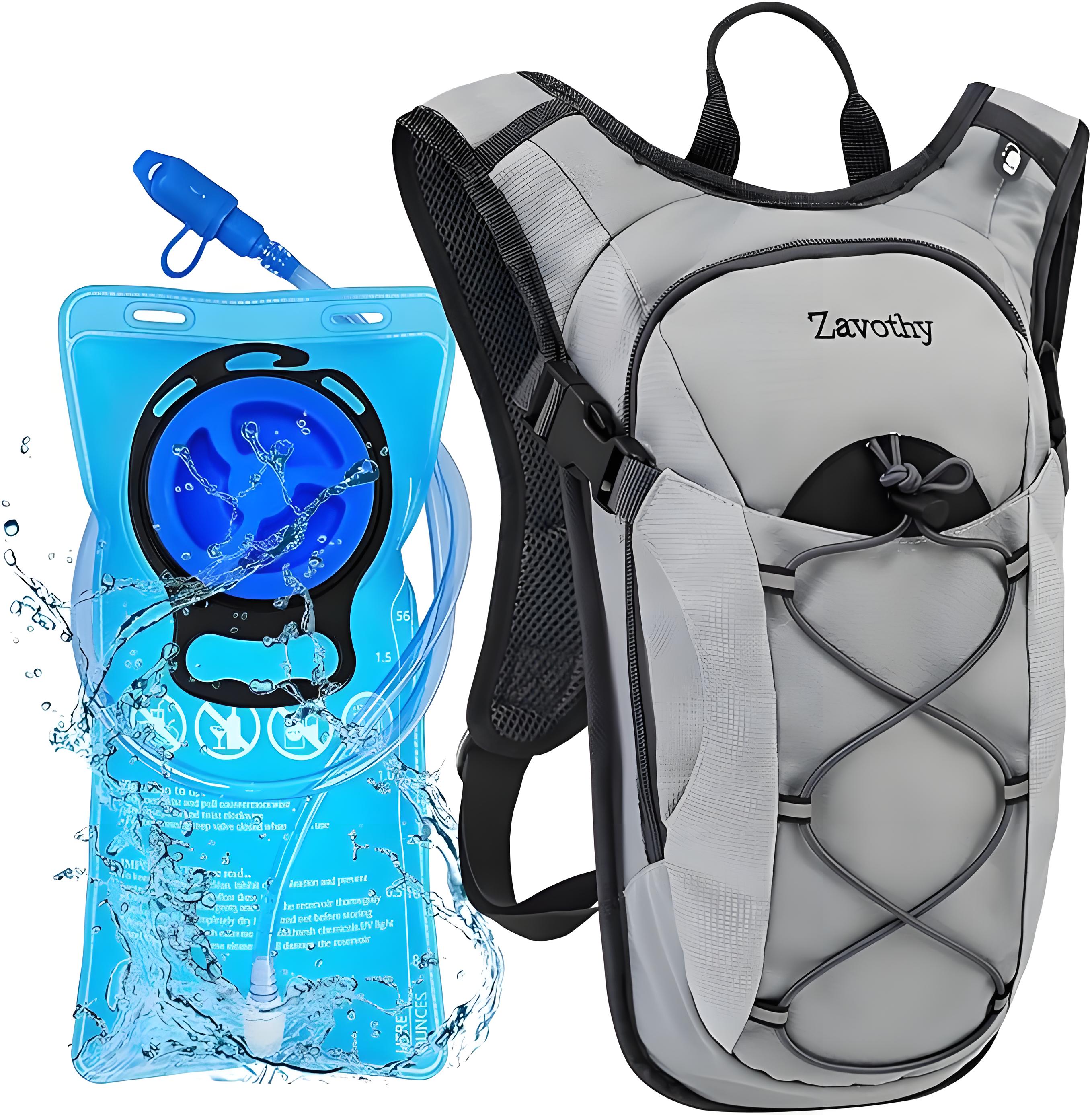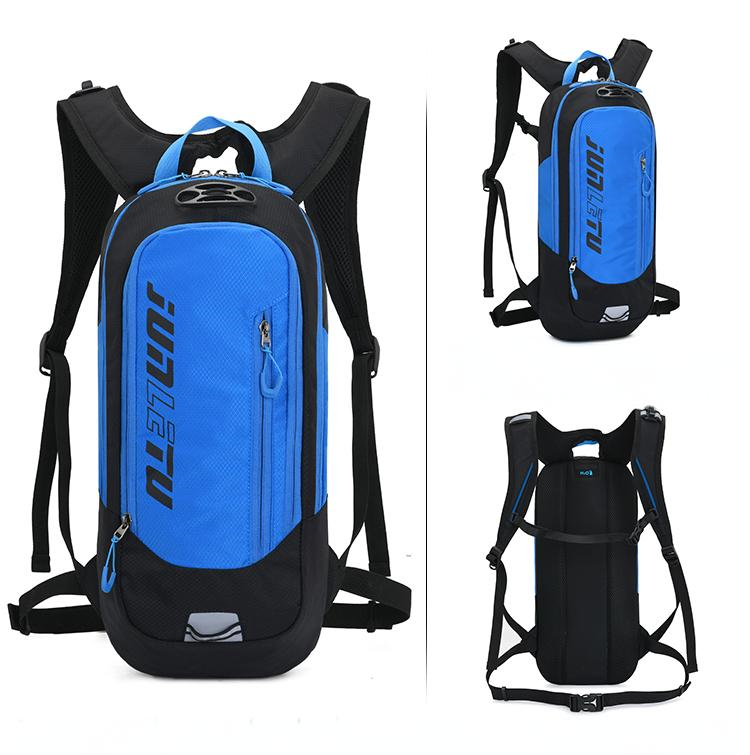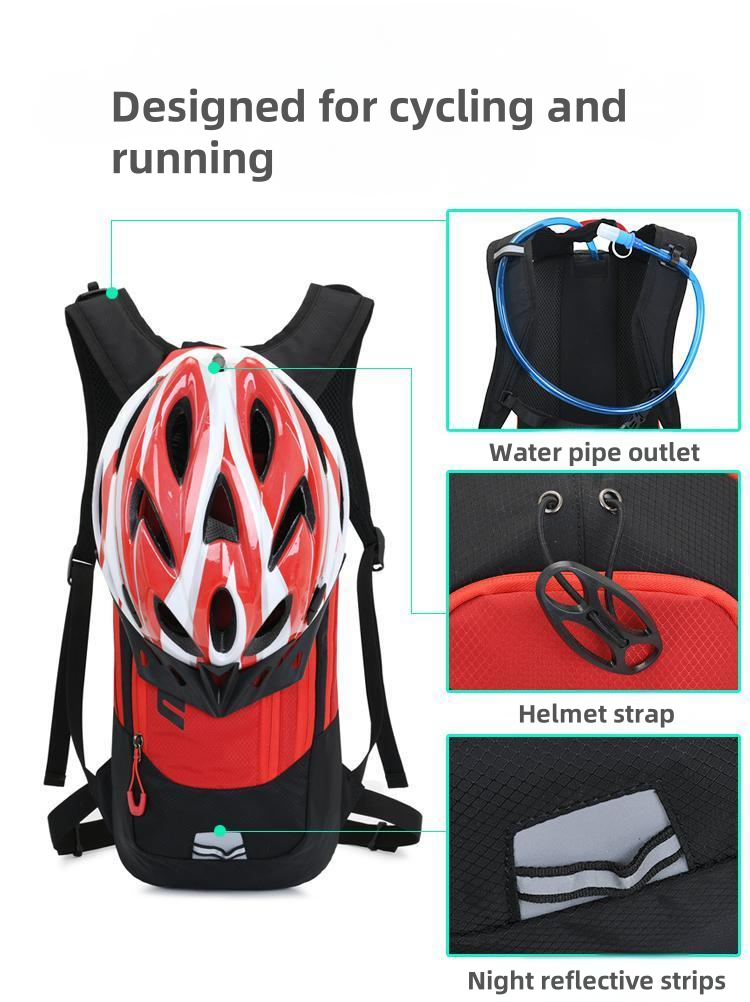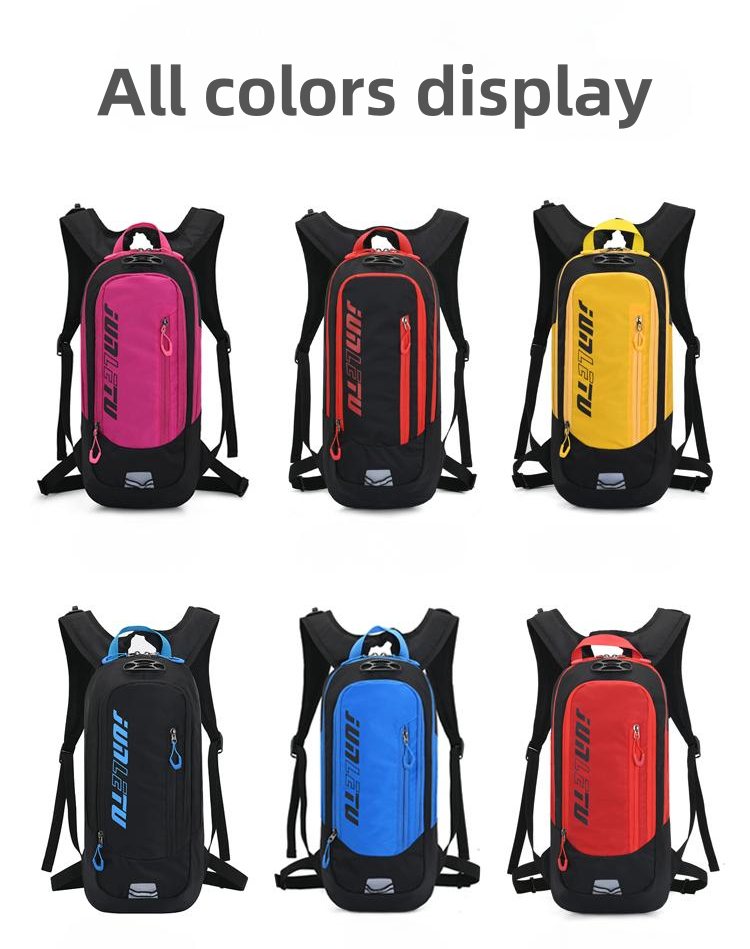As an avid off-road adventurer who’s spent countless hours trekking through rugged trails, I’ve come to rely on my hydration backpack like an old friend. Whether I’m hiking, biking, or tackling a multi-day overland journey, a water bladder (also called a hydration reservoir) is a game-changer for staying hydrated without breaking stride. But one question I often get from fellow adventurers is: How do you fill an off-road backpack water bladder? It sounds simple, but doing it right—without spills, contamination, or frustration—takes a bit of know-how. In this guide, I’ll walk you through the process step-by-step, share tips from my own mishaps and successes, and help you keep your water bladder ready for any trail.

Why Proper Filling Matters
When I first started using a hydration backpack, I underestimated the importance of filling the bladder correctly. A poorly filled bladder can leak, get contaminated, or even damage your gear. Whether you’re refilling at a campsite, a trailhead faucet, or a mountain stream, knowing the right techniques ensures you stay hydrated and your equipment stays in top shape. Let’s dive into the details of how to fill your water bladder effectively, covering different scenarios and practical tricks.
Step-by-Step Guide to Filling a Water Bladder
Filling a water bladder may seem straightforward, but small mistakes can lead to big headaches—like a soggy backpack or funky-tasting water. Here’s my tried-and-true method, refined over years of off-road adventures:
Step 1: Prepare Your Workspace
Before you start, find a clean, flat surface to work on. If you’re outdoors, this might be a rock or a picnic table. At home, a kitchen counter works great. Cleanliness is key to avoid introducing dirt or bacteria into the bladder. I always carry a small microfiber cloth to wipe down surfaces if I’m filling up in the wild.
Step 2: Remove the Bladder from the Backpack
Most hydration backpacks have a dedicated compartment for the water bladder. Unzip or unclip it and gently pull the bladder out, being careful not to tug on the hose. If the hose is detachable, remove it to make filling easier. I learned this the hard way when I once spilled water all over my backpack because I didn’t detach the hose first.

Step 3: Open the Bladder
Water bladders typically have one of three closure types: screw-cap, slide-lock, or fold-top. Here’s how to handle each:
Screw-Cap: Twist counterclockwise to open. Check the rubber gasket inside for wear or debris, as this can cause leaks.
Slide-Lock: Slide the top clip off to open the bladder fully. Ensure the seal is clean before filling.
Fold-Top: Unfold the top and open the bladder wide. These are great for easy filling but require careful sealing to prevent leaks.
Step 4: Fill the Bladder
Hold the bladder steady with one hand and pour water in with the other. Here’s how to do it based on your water source:
Tap or Faucet: Position the bladder under the faucet, filling it to about 80-90% capacity to leave room for air and prevent overpressure. Use a steady, slow stream to avoid splashing.
Water Bottle: Pour slowly from a bottle, ideally using one with a narrow spout for precision. I often use a collapsible bottle for easier pouring on trails.
Natural Water Source (e.g., Stream): Use a water filter or purifier to fill a clean container first, then pour into the bladder. Never fill directly from a stream to avoid contamination.
Step 5: Remove Air and Seal
Gently squeeze the bladder to push out excess air, which helps prevent sloshing during movement. Reseal the bladder securely:
For screw-caps, tighten firmly but don’t overtighten, as this can damage the threads.
For slide-locks, ensure the seal is fully closed by pressing along the entire length.
For fold-tops, fold tightly and clip securely.
Step 6: Check for Leaks
Before placing the bladder back in the backpack, turn it upside down and gently squeeze to check for leaks. If you spot any drips, double-check the seal or inspect for punctures. I once missed a tiny hole, and my gear got soaked halfway through a hike—lesson learned!
Step 7: Reinsert the Bladder
Slide the bladder back into its compartment, ensuring the hose is properly routed and not kinked. Reattach the hose if you detached it earlier. Test the bite valve or mouthpiece by sucking gently to ensure water flows smoothly.

Filling in Different Scenarios
Off-road adventures take you to diverse environments, and filling a water bladder isn’t always as easy as turning on a tap. Here’s how I handle different situations:
At Home: Use filtered tap water for the cleanest fill. A kitchen faucet with a pull-out sprayer makes filling a breeze. I keep a dedicated pitcher for filling to avoid cross-contamination with food residues.
Camping: If you’re at a campsite with a pump or spigot, bring a collapsible bucket or bottle to transfer water into the bladder. This keeps the bladder clean and makes filling easier in tight spaces.
Remote Trails: For streams or lakes, always use a water filter (like a gravity filter or pump) or purification tablets. I carry a lightweight filter that attaches directly to my bladder’s hose for convenience.
Hot Weather: In extreme heat, water expands, so fill to only 80% capacity to avoid stressing the bladder’s seams. I learned this after a desert hike when my overfilled bladder leaked slightly.
Tips for Hassle-Free Filling
Over the years, I’ve picked up a few tricks to make filling a water bladder smoother and more reliable:
Use a Wide-Mouth Funnel: A collapsible funnel (costing $5-$10) makes pouring from bottles or filters much easier, especially in the field.
Keep a Spare Cap: Screw-cap bladders can lose their caps or gaskets. I always carry a spare (around $2-$5) in my pack.
Mark the Fill Line: Some bladders have a max-fill line, but if yours doesn’t, mark it with a permanent marker to avoid overfilling.
Clean the Bladder Regularly: Residual water or dirt can lead to mold, affecting taste and safety. I rinse my bladder with warm water and a mild soap after every trip.
Practice at Home: If you’re new to hydration bladders, practice filling and sealing at home to avoid fumbling on the trail.
I once struggled to fill a bladder during a windy trail stop, with water splashing everywhere. A funnel and a bit of practice would’ve saved me from a soggy mess.

Choosing the Right Water Bladder for Easy Filling
Not all water bladders are created equal, and the design impacts how easy they are to fill. Here’s a table comparing common bladder types based on my experience:
| Bladder Type | Closure System | Ease of Filling | Best Use Case |
|---|---|---|---|
| Screw-Cap | Screw-on cap | Moderate | General hiking, biking |
| Slide-Lock | Sliding seal | Easy | Camping, quick refills |
| Fold-Top | Fold and clip | Very Easy | Remote trails, large-volume filling |
Screw-Cap bladders are durable but require careful sealing. Slide-Lock models are user-friendly but can leak if not closed properly. Fold-Top bladders are the easiest to fill but need extra care to avoid spills when sealing.
Common Mistakes and How to Avoid Them
Filling a water bladder seems simple, but I’ve seen (and made) plenty of mistakes. Here are the most common issues and how to dodge them:
Overfilling: Filling past the recommended capacity stresses seams and valves, leading to leaks. Solution: Stick to 80-90% capacity and check for a max-fill line.
Dirty Water Sources: Filling directly from streams without filtration risks contamination. Solution: Always use a filter or purifier for natural water sources.
Loose Seals: A poorly closed valve or cap causes leaks. Solution: Double-check the seal and test for leaks before packing.
Ignoring Maintenance: Skipping cleaning leads to mold or bacteria. Solution: Clean and dry the bladder thoroughly after each use.
I once filled a bladder directly from a stream without filtering, thinking it looked clean. The water tasted off, and I spent the next trip scrubbing out mold. Never skip the filter!

Tools and Accessories for Filling
The right tools can make filling a breeze. Here’s what I keep in my kit, along with approximate costs:
Collapsible Funnel: $5-$10, lightweight and perfect for precise pouring.
Water Filter/Purifier: $20-$100, essential for safely using natural water sources.
Collapsible Bottle or Bucket: $10-$30, great for transferring water in the field.
Cleaning Kit: $10-$20, includes brushes and tablets for maintaining the bladder.
Investing in a good filter saved me during a week-long trek when the only water available was from murky streams. It’s worth the cost for peace of mind.
Filling in Challenging Conditions
Off-road adventures often mean filling your bladder in less-than-ideal situations. Here’s how I handle tricky scenarios:
Windy Conditions: Shelter the bladder behind a rock or your body to prevent water from blowing away. A funnel helps control the pour.
Limited Water Supply: If water is scarce, fill a small container first to measure exactly what you need, avoiding waste.
Cold Weather: Cold water can make the bladder stiff. Warm the water slightly (if safe) to make filling easier and prevent cracking.
Group Trips: If multiple people need to fill bladders, use a large gravity filter to fill everyone’s reservoirs efficiently.
During a windy desert hike, I struggled to fill my bladder until I tucked behind a boulder and used a funnel. Small adjustments make a big difference.

Maintaining Your Water Bladder
Proper care extends your bladder’s life and ensures clean, fresh water. Here’s my routine:
After Each Use: Rinse with warm water and mild soap. Use a cleaning brush to scrub the interior and hose.
Drying: Open the bladder fully and hang it upside down to air-dry. I use a hanger with clips to keep it open.
Storage: Store in a cool, dry place, ideally in a breathable bag to prevent mold.
Deep Cleaning: Every few trips, use a cleaning tablet (costing $5-$10 per pack) to remove stubborn residues.
I once stored a damp bladder in a stuffy bag, only to find it covered in mold weeks later. Proper drying is non-negotiable.
Real-World Expectations
So, how easy is it to fill a water bladder on the trail? With practice, it takes about 2-5 minutes, depending on the water source and tools. At home, it’s even quicker—closer to 1-2 minutes. The key is to get familiar with your bladder’s design and practice the process before heading out.
I remember my first attempt at filling a slide-lock bladder on a trail. I fumbled with the seal and spilled half my water. After a few tries, I got it down to a smooth routine, even in tricky conditions.
Conclusion: Mastering the Art of Filling Your Water Bladder
Filling an off-road backpack water bladder is a simple skill that gets easier with practice. By choosing a quality bladder, using the right tools, and following a clean, careful process, you can ensure a steady supply of fresh water on any adventure. Whether you’re refilling from a faucet or a mountain stream, these steps will keep your hydration system reliable and hassle-free.
If you’re new to hydration bladders or struggling with the process, I’m here to help with more tips from my trail-tested experience. Stay hydrated and enjoy the journey!

Frequently Asked Questions
1. Can I fill my water bladder directly from a stream?
Never fill directly from a natural water source without filtering or purifying. Use a water filter or purification tablets to avoid contamination. Filters cost $20-$100 and are worth it for safety.
2. How do I prevent leaks when filling my bladder?
Fill to 80-90% capacity, ensure the valve or cap is clean and tightly sealed, and test for leaks by gently squeezing the bladder before packing it.
3. What’s the easiest bladder type to fill?
Fold-top bladders are the easiest due to their wide opening, followed by slide-lock models. Screw-cap bladders require more care to avoid spills.
4. How often should I clean my water bladder?
Rinse after every use and deep-clean with a tablet or brush every few trips. Dry thoroughly to prevent mold, especially after long adventures.
5. What tools are essential for filling on the trail?
A collapsible funnel ($5-$10) and a water filter ($20-$100) are must-haves for efficient, clean filling in remote areas.